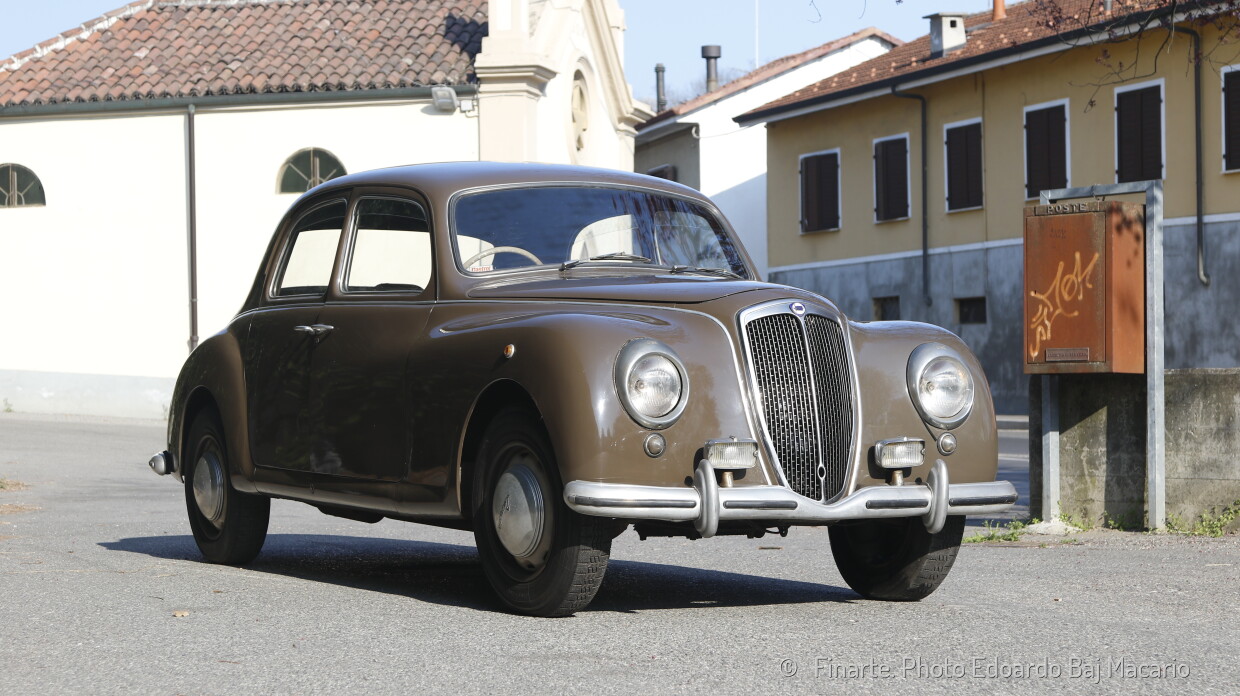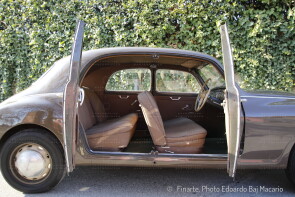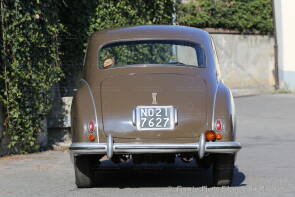
1952 Lancia Aurelia B21
ON/OFF
Why am I an Automotive Masterpiece?
The post-war period brought a desire, a hunger for renewal. People wanted to forget and surpass Everything that reminded of the past and the time before the war. Cars were the "first" example of this thirst for novelty. Since its appearance, the Aurelia caused quite a stir, mainly because, together with the contemporary Fiat 1400, it represented the first genuinely new "Italian" automotive product of the post-war period. The first Lancia car of the post-war period, the revolutionary Aurelia designed by Vittorio Jano appeared in 1950. At the Salone di Torino, inaugurated on May 4, 1950, was exhibited the first of all the Aurelia cars, the B10 sedan, featuring a harmoniously rounded line. It boasted a series of revolutionary innovations on the technical level. To mention a few: the first V-6 engine with a V of 60° as standard 1.8 litres, developed by Francesco de Virgilio, the monocoque with independent four-wheel suspension, the new gearbox/differential unit mounted in a transaxle layout, and inboard rear brakes. The bodywork was partly made of aluminum with the windshield and rear window in curved glass. In the Aurelia, especially in this first B10 version, the qualities of comfort, luxury and ride flexibility were favored. A year later, in the spring of 1951, arrived an engine with a displacement of 2 litres, mounted on the new B20 coupe and, as an alternative to the 1.8 litres, on the sedan that takes the name of B21. The range of the "first series" Aurelia expanded further at the beginning of autumn 1952 when appeared a new lengthened limousine with 6-7 seats, the B15. The Aurelia B20 and B21 obtained - in 1951 and early 1952 - remarkable sporting successes that were, however, severely hindered by the looming rival Alfa Romeo 1900. The Aurelia B21 was a sober, elegant, almost luxurious car with notable performances. As a curiosity and to understand the spirit of the car: in this first series of Aurelia the proportion of cars required with the right-hand drive is nine to one compared to those with left-hand drive. A slightly snobby and somewhat sporting spirit unquestionably prevailed over mere practicality.
The 1952 Lancia Aurelia B21, chassis no. *B21-3317*, was registered for the first time in August 1952 with Torino plates. Its first owner is still unknown, but he sold it in 1971 to a vintage car enthusiast from Novara, Giorgio Marinone, an entrepreneur and prominent figure of the Liberal Party. From 1975, the car belonged to another Novara resident, Lidia Ricotti, who sold it in 1983 to P.B.S. DI GIORGIO SCHON E C. SNC. During his ownership the car was listed in the Registro Storico Lancia Torino. The Schön family has owned the 1952 Lancia Aurelia B21, chassis no. *B21-3317*, for a long time. Mila Schön moved to Milan in the immediate post-war period with her husband, Aurelio Schön, who was a racing driver participating in the 1953 to 1956 Mille Miglia and was among the founders of the Sant’Ambroeus team. In 1958, Mila opened her first atelier and subsequently entered the world of high fashion. In the 1970s, she began creating prêt-à-porter collections. The son Giorgio has managed the family business for many years, dedicating all his extra time to racing and collecting historical cars. He raced with numerous cars, including the Lancia Delta S4, and has an exceptional car collection. He was the owner of the Zagato brand from 1994 to 2001, and in recent years, he has primarily focused on Rossocorsa, the largest Ferrari and Maserati dealership in Europe. Schön owned the B21, chassis no. *B21-3317*, until 1990, when he sold it to the Motoralbum classic car dealer. The car was auctioned at the Finarte event 1000 FINARTE in May 2019 in Brescia and sold to Heijstee Classics of Frans Heijstee. Today, the car is a perfect example of a "preserved" vehicle, in good aesthetic and working condition, with a well-maintained coating, flat but complete chrome trims, worn but intact interiors, and several period details, such as a Condor radio, new front headlights, a rear fog light, and small touches like a rare old Club delle Mille Miglia sticker. The car still wears its second set of Italian black plates (NO217627).




